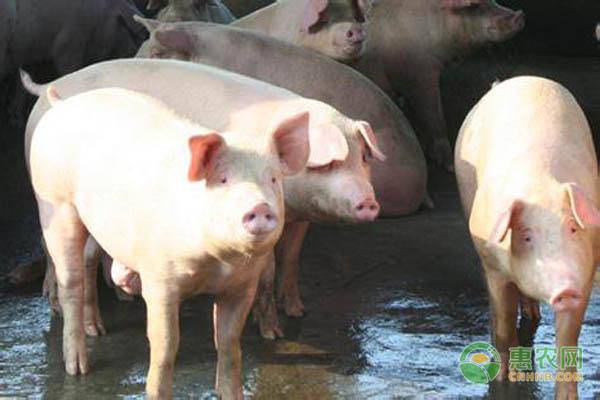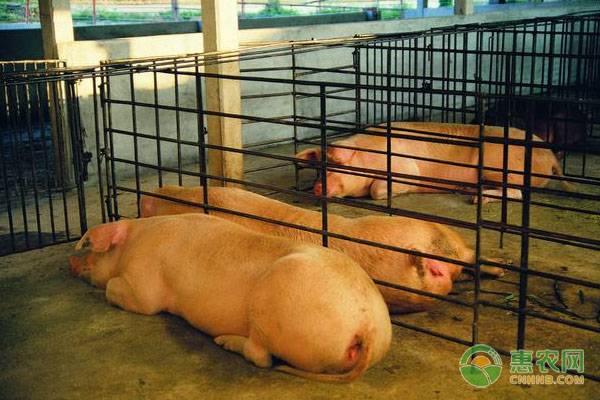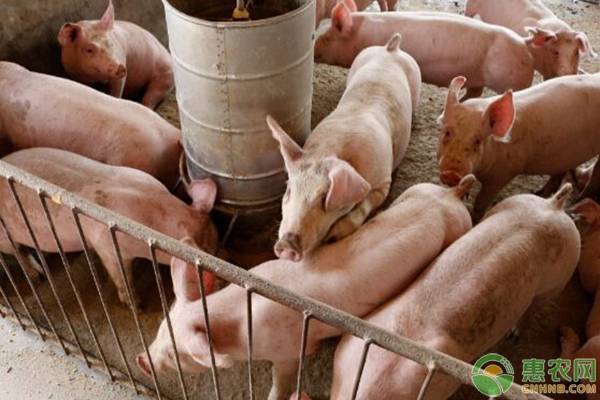The temperature rises in spring and the bacterial fertility is enhanced, which is a high incidence of infectious diseases in pigs. If you don't pay attention, the pigs are easy to get infected. Once the infectious diseases spread, they will have a greater impact on the pig farmers. So today's small series summarizes the common diseases and preventive measures of spring pigs. Let's take a look at it.

1, swine flu
Swine flu is an acute swine disease. It spreads the bacteria through the air and infects the respiratory system of the pig. It is highly contagious and has a rapid onset rate. It is easy to cause large-scale influenza virus infection in pig farms and breeding bases. Pigs infected with swine flu virus may have symptoms such as loss of appetite, anorexia, elevated body temperature, severe asthma, weakness of limbs, etc. Although the symptoms are obvious, they are generally recovered after about seven days of treatment, and the course of disease is shorter. However, if it is not properly managed, it is easy to expand the scope of infection and increase the mortality rate of pigs.
Precautionary measures: Renovate the environment of the pig house according to the season, so that the pig house is always kept in a ventilated state to prevent the germs from multiplying in a closed environment. Keep the pig house sanitary and disinfect it regularly. It is also possible to inject a swine flu preventive vaccine. Once the sick pig is found, it should be quickly isolated, disinfected in the area, and treated to prevent the spread of swine flu disease.
2, pig diarrhea disease
Porcine diarrhea disease has obvious seasonal characteristics, mostly in winter and spring, mainly in the form of viral diarrhea and bacterial diarrhea. The main cause of porcine diarrhea is digestive tract infection, which is contagious and spreads rapidly. After infection, there will be symptoms such as anorexia, vomiting and diarrhea. Because of poor immunity, the symptoms of sick pigs are more serious than those of adult pigs. Excessive body temperature, lack of mental activity, severe cases will continue to vomit, dehydration symptoms. The incidence of porcine diarrhea in piglets is high, but the mortality rate is low.
Precautionary measures: Pay attention to the problem of keeping warm in pig houses, which is an effective measure to prevent diarrhea in pigs. Strictly check the breeding environment of the pig house, keep the temperature and humidity reasonable, let the air flow naturally, keep the pig house in a dry state, try to keep the feed fresh and not deteriorated. In addition, in the prevention of infection measures for porcine diarrhea, it is also necessary to regularly disinfect the pig house with caustic soda, and use vaccines to strengthen preventive measures against diarrhea in pigs.

3, pig respiratory infections
Pig respiratory infections occur mostly in spring and autumn, mainly caused by cold weather, humid environment, climate change, etc., respiratory or viral infections occur, pigs may experience poor breathing and asthma after illness. Cough and other symptoms. If the farm does not pay attention to the management of health, it will easily lead to a wide spread of respiratory infections in pigs. The long-term course of respiratory infection in pigs has a great impact on the healthy growth of pigs, and the mortality rate of acute diseases is higher.
Precautionary measures: In the prevention stage of respiratory infections in pigs, the pig house should be kept clean and clean, the garbage generated in the pig house should be cleaned regularly, the pig house should be kept dry and ventilated, and the pig house should be inspected regularly. The vaccine or the mixture of berberine detoxification and the addition of respiratory effects and mildew can prevent the disease.
4, pig foot and mouth disease
Foot-and-mouth disease is an infectious disease caused by the FMDV virus. The sick pig's mouth and hoof will foam, and there will be plaque, and the body temperature rises and the spirit is weak after infection. The mortality rate of the piglets is higher.
Precautionary measures: Feeding and care must be strengthened. The pig house should be kept clean, ventilated, dry and warm. It is also necessary to increase the proper drinking water, strengthen the organic nutrition of various nutrients, and carry out artificial feeding when it is not eating. Disinfection of pig houses with disinfectant every day is the most fundamental control method
5, pig exudative dermatitis
Porcine exudative dermatitis is a very acute infectious disease, which occurs mostly in lactating piglets and weaned pigs. Pig exudative dermatitis is a disease caused by glucococcus. Usually, people also excrete pigs. Dermatitis is called "luck oil skin disease" or "piglet smog rash", etc., and its main features are systemic and acute exudative dermatitis. Porcine exudative dermatitis has a high rate of transmission, high infectivity and high mortality.
Precautionary measures: The delivery room should be strictly disinfected. The whole body should be washed with warm water of 40 °C before the sow enters the delivery room, and then disinfected with 0.1% povidone iodine solution. After the piglet is born, wipe the mucus on the pig's mouth, nose and body skin with a sterile towel, and then put it into a sterilized incubator or other sterile container. Piglets should be operated according to regular procedures when breaking the umbilicus, breaking teeth, and injections. Strict disinfection should be carried out with iodine to prevent bacterial infection.

The above are common diseases and preventive measures for spring pigs. Spring is a season of high incidence of pig diseases. Pigs in pig farms are housed in large quantities. Once infectious diseases occur, they will affect the pigs of the entire pig farm, causing farmers to The economy caused losses. Therefore, farmers must take timely preventive work to prevent the occurrence of pig diseases.
For the wonderful pictures and hot comments about spring pig disease, you may be interested in the following recommended content, welcome to read.
Processing high-throughput samples, intelligent reuse for large-capacity publishing, work surface: 200cm, 8 sample injection needles, 12 temperature-controlled incubation positions, 12 room temperature incubation positions, 32 plate storage positions, Sunrise microplate reader, HydroFlex plate washer, up to 512 specimens, sequential loading of samples, reagents, microplates Parallel loading of up to 6 plates for fast dispensing.
The automatic enzyme immunoassay analyzer is based on the principle that the enzyme and the substrate can produce a color reaction, the absorption lines of different substances have different characteristics, and strictly abide by the Lambert-Beer law, quantitative and qualitative analysis of substances. instrument. The method of analyzing the content of various enzymes such as antigen or antibody generally mainly adopts colorimetric method. In practice, spectrophotometry is the basic working principle of an automatic enzyme immunoassay analyzer. The light emitted by the light source lamp becomes a beam of monochromatic light after passing through a filter or a monochromator. The monochromatic light beam passes through the sample to be tested in the microtiter plate, and part of the monochromatic light beam is absorbed by the sample and reaches the photodetector. The intensity of the light signal projected on it is converted into the magnitude of the electrical signal by the photodetector. This electrical signal is processed by pre-amplification, logarithmic amplification, analog-to-digital conversion, etc., and then sent to the microprocessor for data processing and calculation, and the test results are output by the display and printer. The microprocessor completes the movement in the X and Y directions of the mechanical drive through the control circuit.
The automatic enzyme immunoassay analyzer adds the sample to the microwells of the pre-coated antigen or antibody microtiter plate, washes after the reaction, removes the unseparated ligand, then adds the enzyme isolate, after incubation, washes again , remove the unseparated compound, and then add the enzyme substrate, after the reaction, the colored final product is formed, and the stop solution is added to stop the reaction. The absorbance of each microwell of the microtiter plate is read by the wavelength that has been set by the spectrophotometer. The concentration value of the analyte in the sample is calculated by the absorbance value of the sample and the standard curve, so that the quantitative result can be obtained, or the absorbance of the sample is compared with that of the standard product, so that the positive or negative qualitative result can be obtained.
ELISA analyzer,enzyme immunoassay workstation,automatic enzyme immunoassay analyzer,automatic enzyme immunoassay system
Jilin Sinoscience Technology Co. LTD , https://www.contoryinstruments.com